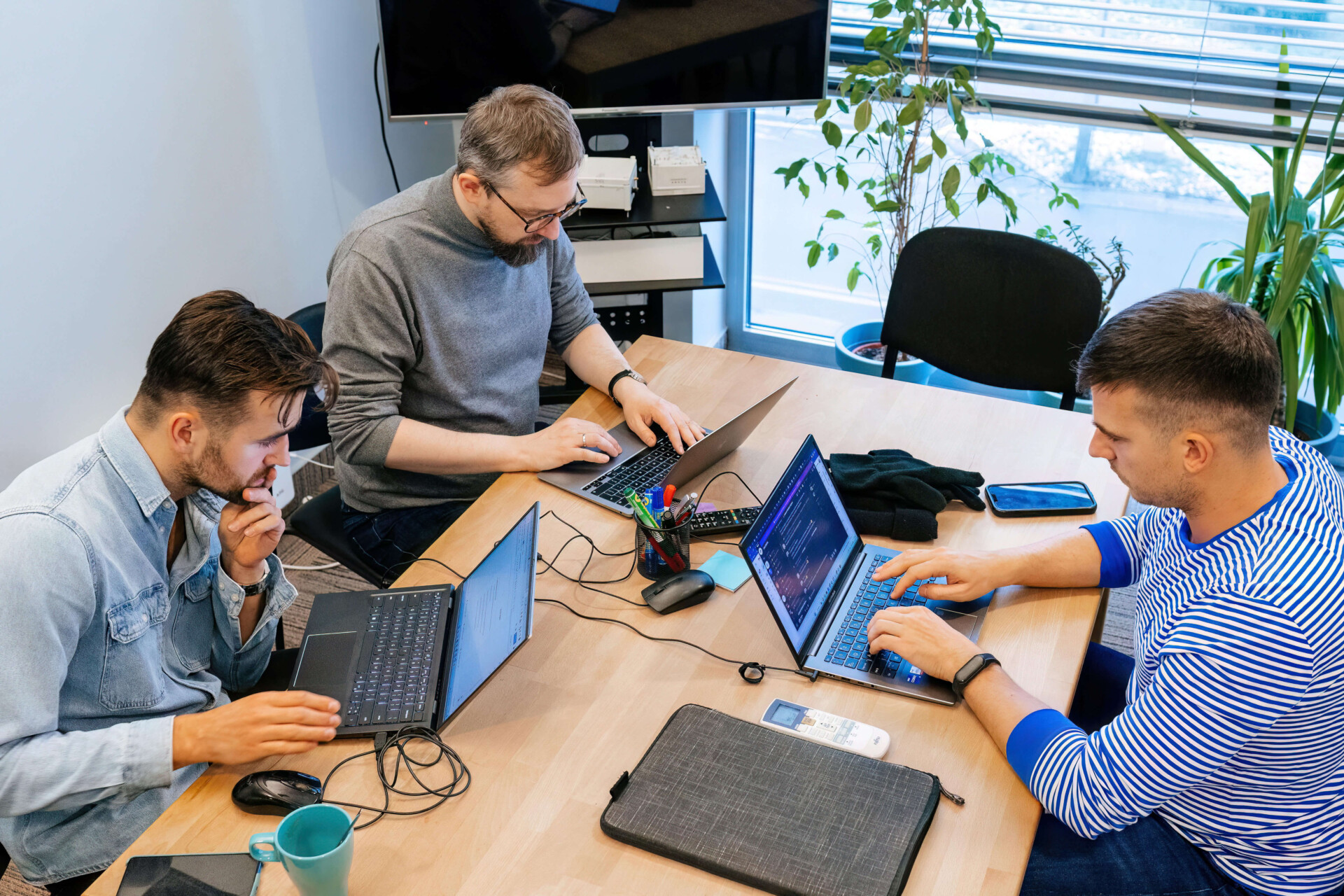Introduction: Why Backend Development Shapes Your Product’s Success

The backend of your application is the invisible engine powering user experiences, data management, and scalability. While users see and interact with the frontend, the backend manages APIs, databases, business logic, and integrations that keep everything running seamlessly.
In today’s competitive landscape, where speed to market and scalability are critical, businesses often face a key decision: Should you hire a Dedicated Backend Development Team or continue with ad-hoc solutions or project-based outsourcing?
This article unpacks when and why a Dedicated Backend Development Team can be a strategic investment for your business.
What Does a Dedicated Backend Development Team Do?

A Dedicated Backend Development Team focuses exclusively on building, maintaining, and scaling your server-side architecture while aligning closely with your product goals. Unlike freelancers or project-based agencies that handle one-off deliverables, a dedicated team provides ongoing, cohesive support across your product’s lifecycle.
They typically handle:
- Designing and maintaining secure, scalable APIs.
- Managing database architecture, optimisation, and migrations.
- Implementing complex server-side logic for business workflows.
- Ensuring data security, backups, and compliance.
- Performance monitoring and optimisation as your user base grows.
Because backend systems evolve with your business needs, having a dedicated team ensures your infrastructure can handle growth without constant breakdowns or rework.
Signs Your Business Needs a Dedicated Backend Development Team

While not every business needs a dedicated team immediately, several indicators suggest it is time to consider this move:
- You’re experiencing rapid user growth and need to scale backend capacity without downtime.
- Your product roadmap requires complex backend functionalities like payment processing, real-time data analytics, or advanced user management.
- Your application frequently encounters performance issues, resulting in slow response times.
- You’re transitioning from a monolithic to a microservices architecture to improve scalability.
- Your in-house team is overwhelmed with support and frequent feature updates, slowing down innovation.
Recognising these signs early can prevent costly technical debt and bottlenecks as your business grows.
Advantages of Hiring a Dedicated Backend Development Team

Hiring a Dedicated Backend Development Team brings several strategic benefits:
Focused Expertise
You gain access to backend specialists experienced in handling APIs, server-side logic, and security, ensuring clean, scalable architecture.
Faster Development Cycles
With a dedicated team handling the backend, your frontend and product teams can work in parallel, reducing time to market for new features.
Scalability and Future-Proofing
A dedicated team builds infrastructure with scalability in mind, preparing your business to handle future user loads and feature expansion without constant refactoring.
Cost Efficiency
Hiring a dedicated offshore or nearshore backend team can be more cost-effective than scaling an in-house team in high-cost regions while maintaining quality.
Long-Term Collaboration
A dedicated team learns your business processes and product deeply, enabling consistent improvements and smoother knowledge transfer over time.
Potential Challenges to Consider

While there are clear advantages, it’s essential to acknowledge and prepare for potential challenges:
- Time zone differences may require aligning overlapping working hours for stand-ups and critical reviews.
- Maintaining seamless communication between backend, frontend, and product teams is crucial to avoid delays.
- Onboarding a dedicated team into complex legacy systems can take time.
- There is a risk of vendor lock-in if knowledge transfer and documentation are not managed properly.
Choosing the right partner and establishing clear processes can mitigate these challenges.
Dedicated Backend Team vs. Project-Based Outsourcing

Many businesses consider whether hiring a dedicated team is better than project-based outsourcing. Here’s a simplified view:
- Dedicated Backend Development Team: Ideal for evolving products with continuous feature additions and backend complexity. Provides flexibility and consistent alignment with your roadmap.
- Project-Based Outsourcing: Suitable for one-off backend feature builds with clear, fixed scopes, but can limit flexibility if your needs evolve.
If your business plans to scale consistently, investing in a dedicated team provides better alignment and adaptability.
Cost Considerations
The cost of hiring a Dedicated Backend Development Team depends on:
- The size and seniority of the team.
- Required technology stack and architecture complexity.
- Integration needs with other systems (CRM, payment gateways, etc.).
- Project timelines and support models.
Costs can be structured as:
- Monthly retainer per developer or team.
- Full-time equivalent (FTE) pricing models.
While upfront costs may seem higher than ad-hoc freelancers, the long-term benefits in reduced maintenance, fewer system failures, and scalability often result in higher ROI.
How to Select the Right Dedicated Backend Development Partner

Choosing the right partner is crucial for the success of your backend architecture. Evaluate potential partners by:
- Reviewing their portfolio and case studies for projects of a similar scale and complexity.
- Assessing their proficiency in your preferred technology stack (Node.js, Python, .NET, etc.).
- Understanding their approach to documentation and knowledge sharing.
- Checking their ability to align with your product roadmap and workflows.
- Evaluating their communication processes and availability during critical phases.
- Ensuring they follow security and compliance best practices relevant to your industry.
A partner aligned with your long-term goals will ensure your backend infrastructure evolves with your product needs.
Best Practices for Managing a Dedicated Backend Development Team

To maximise efficiency:
- Use collaboration tools like Jira, Slack, and GitHub for transparency.
- Establish clear API documentation and architecture standards for consistency.
- Hold regular sprint planning and review sessions to align priorities.
- Integrate QA and automated testing early to prevent deployment issues.
- Foster a culture of continuous improvement and feedback.
Conclusion: Is a Dedicated Backend Development Team Right for You?
If your business is scaling, dealing with complex backend requirements, or aiming for long-term product evolution, hiring a Dedicated Backend Development Team is often the best approach to ensure your platform’s stability, scalability, and user experience.
While it requires careful planning and selection, the investment pays off by reducing downtime, supporting rapid feature releases, and providing a future-ready backend architecture aligned with your business goals.
Your backend is the foundation of your digital product. Building it with the right team is building your business for long-term success.



